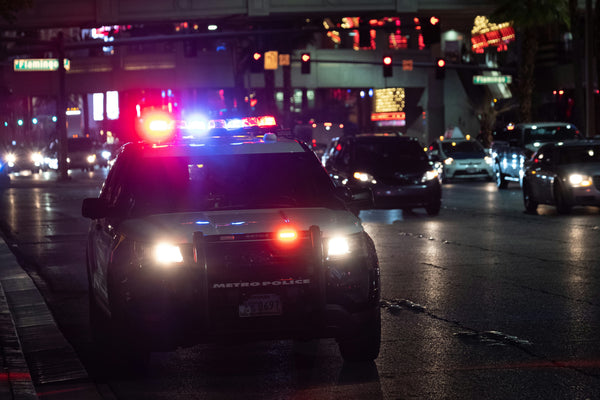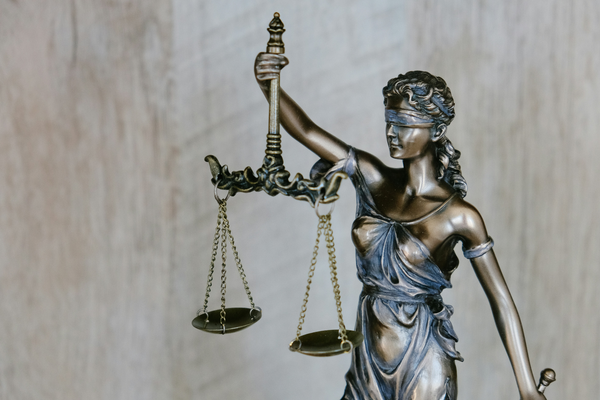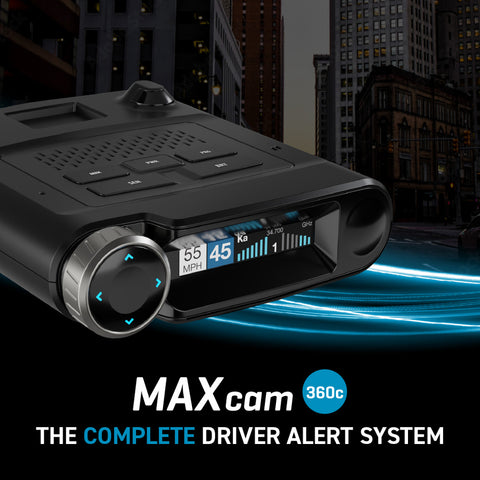How to Beat a Speeding Ticket Caught on Radar
How to beat a speeding ticket caught on radar—it's a question many motorists find themselves asking.
In this article, we unravel various effective strategies to help you challenge a speeding ticket. We'll talk about preparation tips for before you even get pulled over and strategies for during the stop.
Then we delve into deeper tactical advice, from how to request radar gun information, understanding the legal landscape, and the importance of subpoenaing maintenance records.
This guide will also discuss how radar works, common failures of radar systems, and recommend the best radar detectors to help you avoid future speeding tickets.
Let's get started.
What this article covers:How to Beat Your Speeding Ticket in Court
Facing a judge with a speeding ticket in hand might seem daunting, but with the right preparation and knowledge, you can effectively challenge the charge.
Learn how to articulate your defense and use technical evidence to potentially sway the verdict in your favor.
Prepare Yourself Before You Get Stopped
Before you even see those flashing lights in your rearview mirror, it's important to be aware of your surroundings.
Pay attention to the traffic flow, road signs, and potential witnesses who could corroborate your account of the driving conditions and your vehicle's behavior.
Recording the conditions of the stop can aid your defense if you contest a ticket.
Document the weather, road conditions, and any notable interruptions or distractions. This detailed note-taking can prove invaluable in cases where environmental factors might influence radar readings.

Use The California Stop
The "California stop" is all about staying calm and reducing the stress of the interaction plays in your favor.
When pulled over, show your hands, comply with the officer's requests, and safely hand over your documents without admitting any fault.
These actions can set a cooperative tone for the interaction.
Ask To See The Radar Gun
It's entirely reasonable to express your curiosity about the radar gun used during your stop.
Asking to see the device can sometimes prompt the officer to share details about the model and functionality, which could be key to your defense.
If the officer refuses to show the radar gun, make sure to document this refusal. It can serve as a significant point in court, potentially indicating a lack of transparency or procedural adherence.
Knowing the model and type of radar can also help you gather specific defense material relating to that device's reliability and history of accuracy.
After the Stop
The moments after receiving a speeding ticket are all about setting up your defense. This part of the article outlines the steps you should take immediately following the stop.
Step 1: Know What Device The Officer Used
Understanding exactly what type of device was used to measure your speed is the first step in forming your defense.
During the stop, try to obtain as much information as possible about the make, model, and even the serial number, if visible. The citation itself should mention the device used.
If this detail is missing or unclear, follow up with the law enforcement agency to clarify.
Step 2: Understand The Case Law Regarding Radar Use
It's vital to get acquainted with how radar evidence has been handled in past legal cases within your jurisdiction. Research relevant case law to understand precedents that could influence your case.
Knowing key rulings where radar evidence was successfully challenged can provide a foundation for your defense. Citing these precedents during your court appearance can be a powerful way to contest the radar evidence against you.

Aligning your defense with successful past cases shows the court that there are legitimate concerns about the reliability of radar readings.
Step 3: Source The Manufacturer's Manuals
Obtaining the manufacturer's manual for the radar used can be a game-changer in court.
These manuals often contain information on the recommended usage, calibration needs, and maintenance schedules prescribed by the manufacturer.
Check if the officer's use of the radar adhered to these guidelines. Discrepancies between the manufacturer's recommendations and the officer's handling of the device can form a strong part of your technical defense.
Step 4: Subpoena The Records
Based on our observations, subpoenaing records is a critical move in validating the accuracy of the device used.
When doing so, request calibration and maintenance records of the radar from the police agency (for those wondering how to request radar gun calibration records, this is how).
Also, how often do radar guns need to be calibrated matters here. They should be calibrated once every 30 to 60 days.
It's also wise to check the officer's training and certification concerning the specific device. Analyzing these documents can reveal lapses or inconsistencies that might have affected the device's accuracy at the time of your stop.
Step 5: Attain The POST Records
Understanding the Police Officer Standards and Training (POST) requirements that apply to the operation of radar devices is another angle for your defense.
Request copies of the POST records to confirm if the officer was properly certified to use the radar at the time of the citation.
Any deviation can be leveraged in court to argue against the credibility of the speed reading taken during your stop.

How Radar Works
Understanding the principles behind radar can empower you when contesting a speeding ticket.
Radar devices detect and calculate the speed of moving objects by emitting radio waves that bounce back from your vehicle. The time it takes for these waves to return is used to calculate your speed.
The reliability of this technology, while high, is not infallible. Environmental factors like weather conditions and topographical features can impact the accuracy of radar readings.
How Radar Fails
Common errors in radar operation include beam reflection issues, where the radar signal bounces off multiple targets, and multi-target detection, which can confuse the device if multiple vehicles are in proximity.
When contesting a speeding ticket, identifying these potential errors can be helpful to your case. Discussing these technical faults can aid in discrediting the evidence presented against you.
Best Radar Detectors
At Escort Radar, we pride ourselves on offering some top tier radar detectors. Where to mount radar detector? We recommend the windshield or dash, where it has a clear line of sight for optimal detection, helping you avoid a ticket to begin with.
Here are a few that stand out.
ESCORT Redline 360c
The ESCORT Redline 360c is our pinnacle of high sensitivity and comprehensive protection.
It offers unmatched detection range and is equipped with 360-degree radar coverage, detecting signals from every direction. Our research indicates that its stealth capability makes it undetectable by radar detector detectors.
Additionally, the Redline 360c features GPS-driven intelligence, reducing false alerts from stationary sources like door openers.
ESCORT MAXcam 360c
Our ESCORT MAXcam 360c integrates the robust features of a radar detector with a high-quality dash camera. It's equipped with GPS and a vast database of speed limit and red-light camera locations, increasing its accuracy and utility.
Wi-Fi and Bluetooth connectivity allow for seamless updates and real-time sharing among the community of users.
ESCORT MAX 360c MKII
The ESCORT MAX 360c MKII MKII builds on the legacy of its predecessor with a 50% improvement in detection range. Its advanced filtering is designed to lower false alerts, providing a more reliable system.
Our findings show that a faster processor increases the device's responsiveness, allowing for quicker and more accurate alerts.
Updated Wi-Fi components ensure that your device remains current with the latest updates and road conditions without manual intervention.
ESCORT MAX 360 MKII
Featuring dual antenna design, the ESCORT MAX 360 MKII provides comprehensive radar coverage.
Its AutoLearn technology uses GPS to recognize and remember false alerts, adapting to your frequently traveled routes. The access to our Defender Database gives users an added advantage by providing timely information on speed traps, red light cameras, and known speed camera locations.
ESCORT MAX 3
For those seeking effective radar detection, the ESCORT MAX 3 is an excellent choice.
While it is budget-friendly, it still incorporates essential features like the IVT Filter, which reduces false alarms caused by modern vehicle safety systems.
Plus, it is suitable for both urban and highway use, and its user-friendly setup makes it ideal for drivers who prefer simplicity without compromising on quality.
Conclusion
This article has laid out a multifaceted strategy to address and potentially overcome a radar-recorded speeding ticket.
From preparing before you're even stopped to understanding radar technology and its failures, we've covered the necessary steps and legal insights to help you craft a strong defense.
We explored the critical importance of understanding the device used, the case law, and obtaining key records and manuals. You now possess the knowledge to question radar evidence and possibly mitigate the consequences of your speeding ticket.
To avoid future issues, equip your vehicle with Escort Radar. Visit us today for the best in detection and road safety solutions.
If you want to learn more, why not check out these articles below:
- Are Radar Detectors Legal in Arizona
- Are Radar Detectors Legal in Michigan
- Are Radar Detectors Legal in PA
- Are Radar Detectors Legal in South Carolina
- Are Radar Detectors Legal in Colorado
- Are Radar Detectors Legal in Washington State
- Are Radar Detectors Legal in Wisconsin
- Are Radar Detectors Legal in MA
- Are Radar Detectors Legal in CT
- Are Radar Detectors Legal in Nevada
- Are Radar Detectors Illegal in Oklahoma
- Are Radar Detectors Illegal in Louisiana
- Are Radar Detectors Illegal in New Mexico
- Are Radar Detectors Legal in VA
- How Does Police Radar Know Which Car Is Speeding
 |
| 


